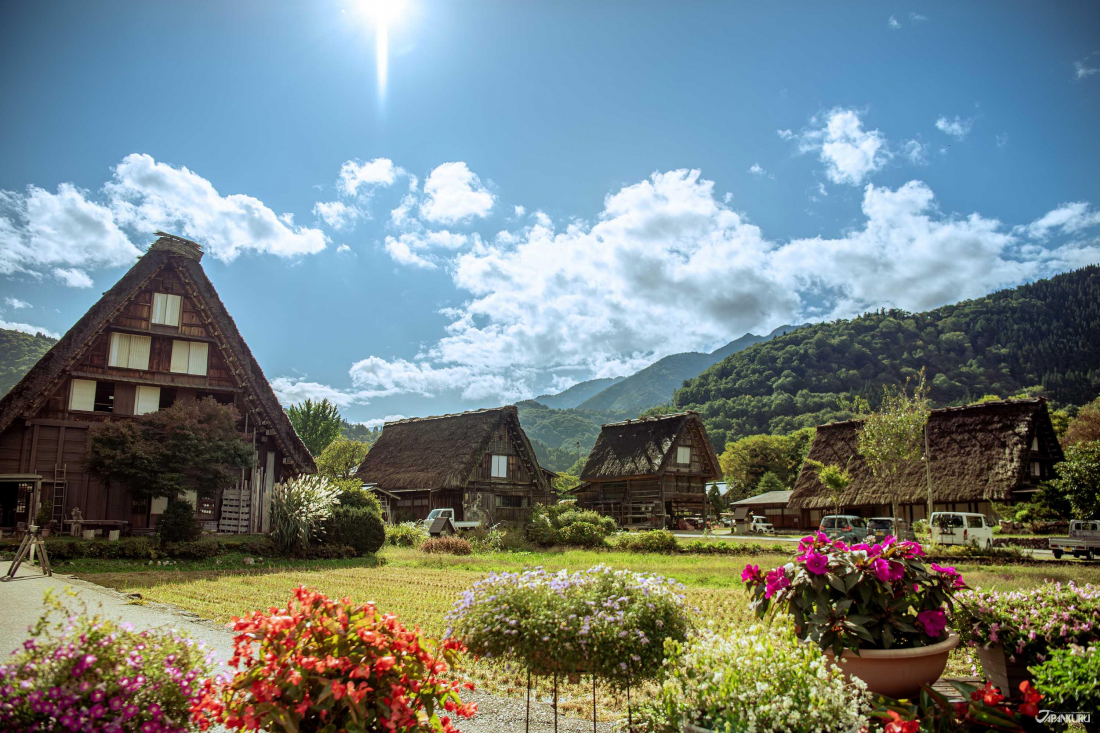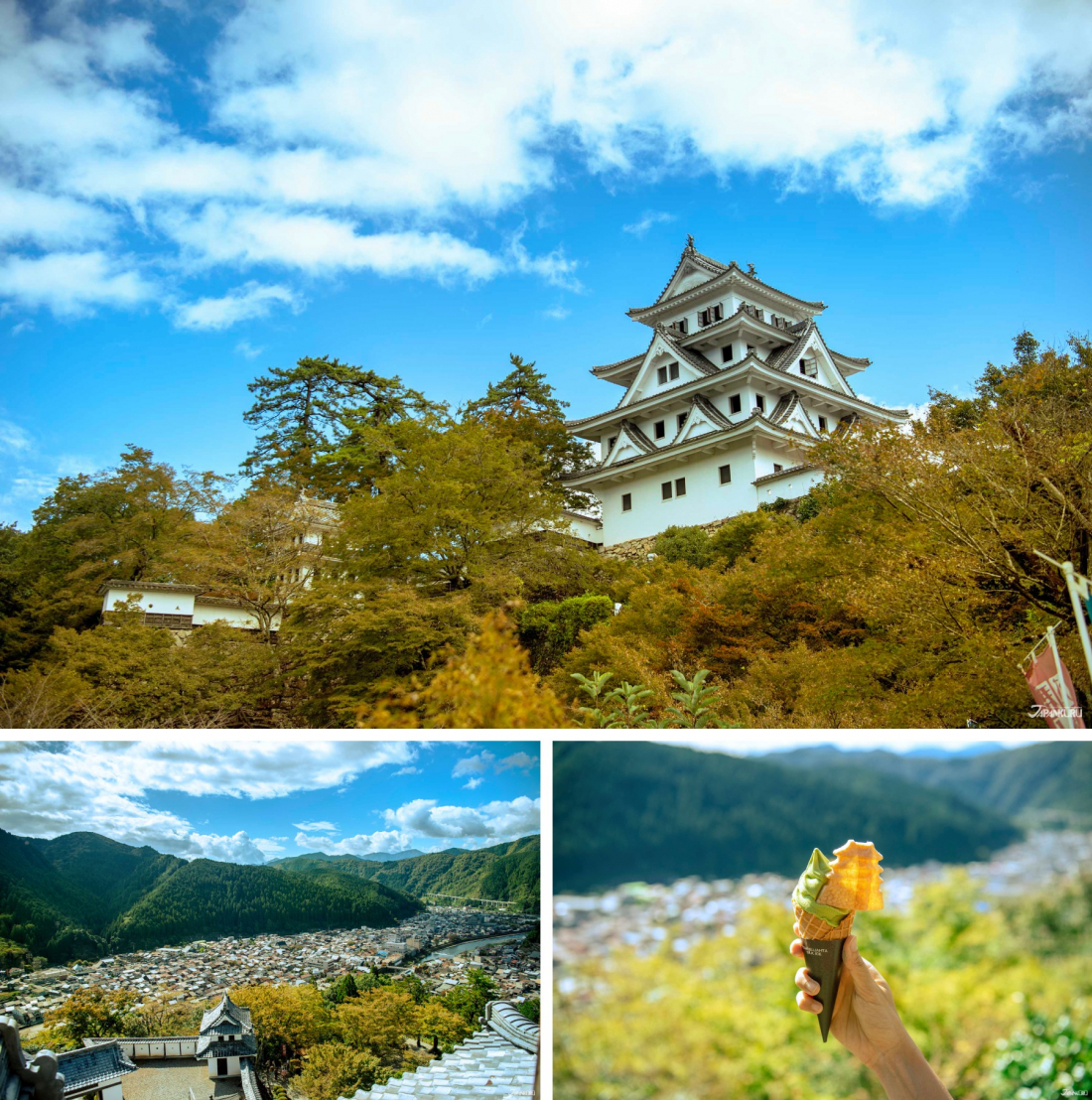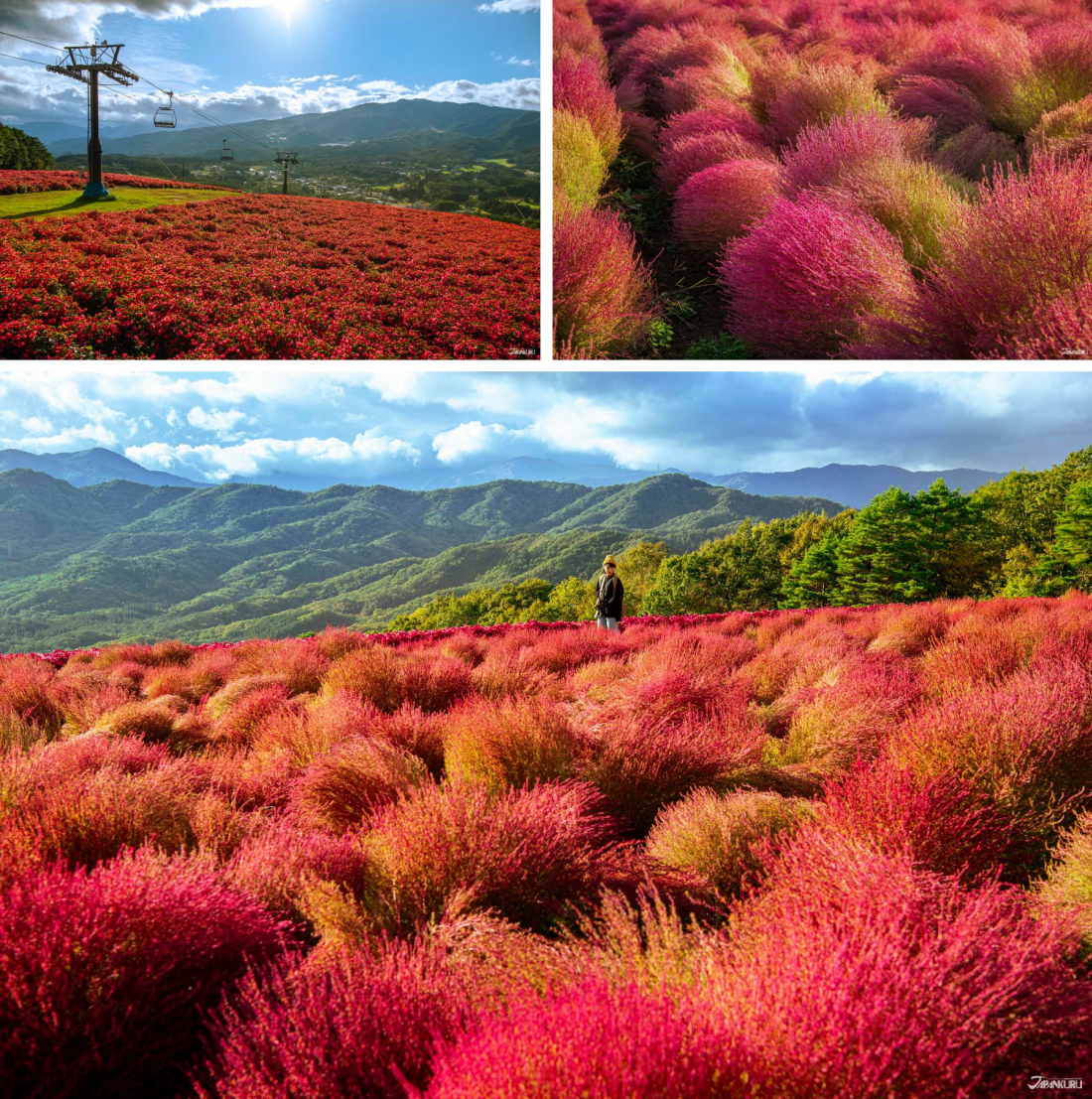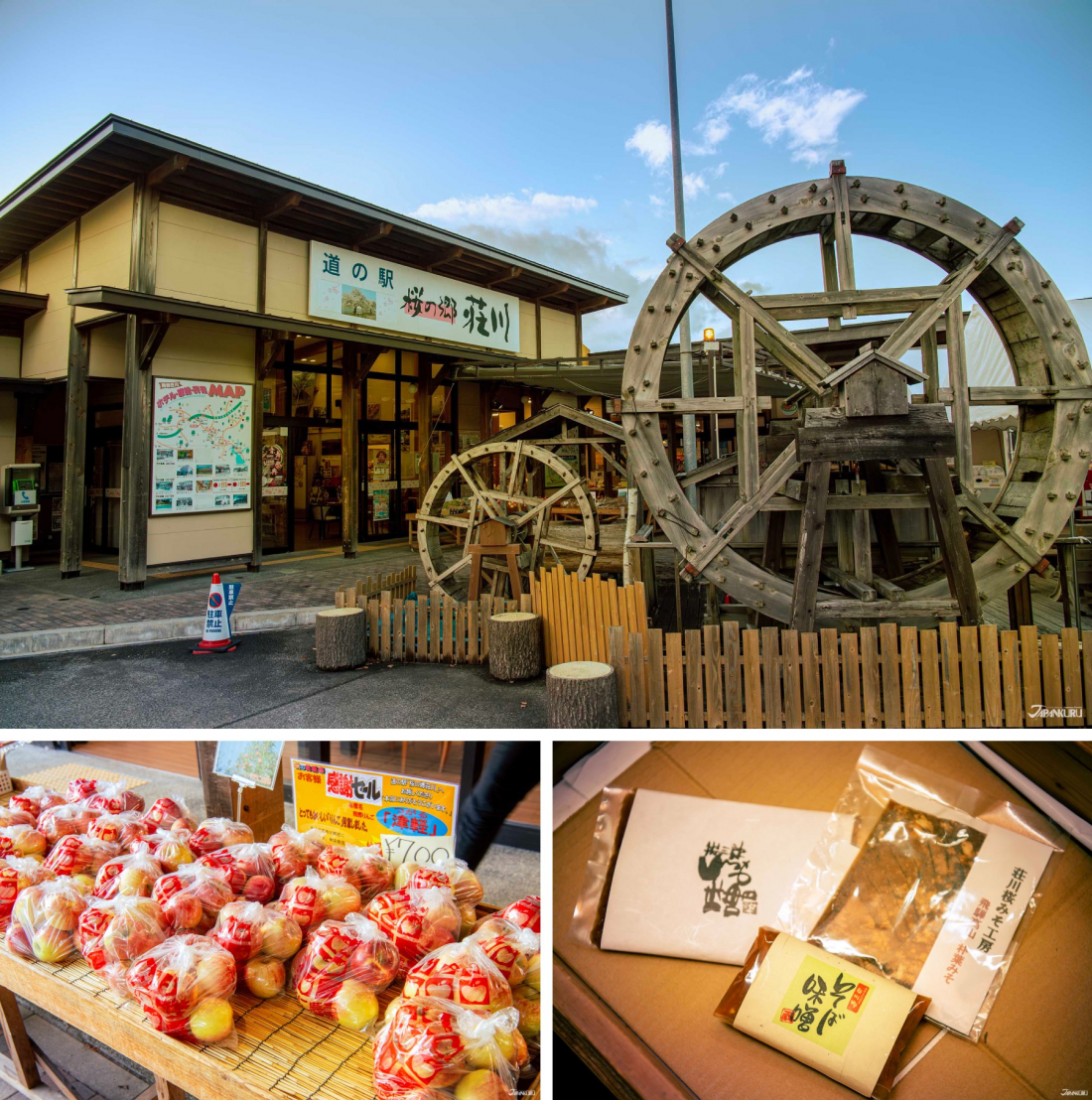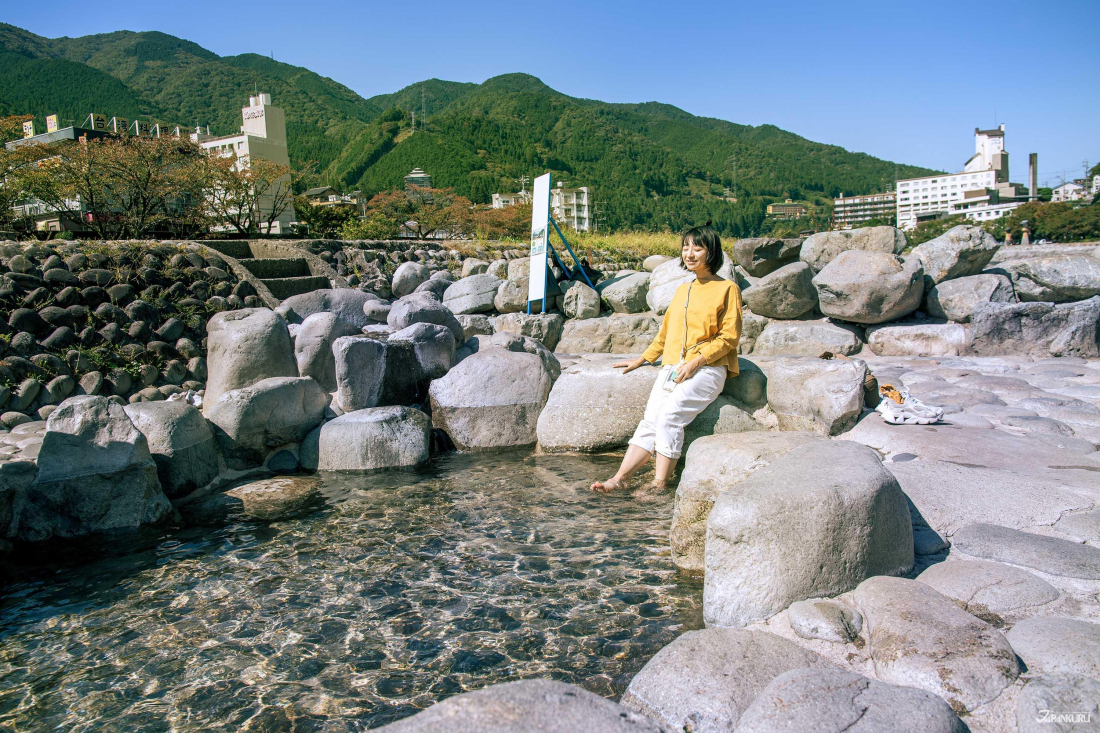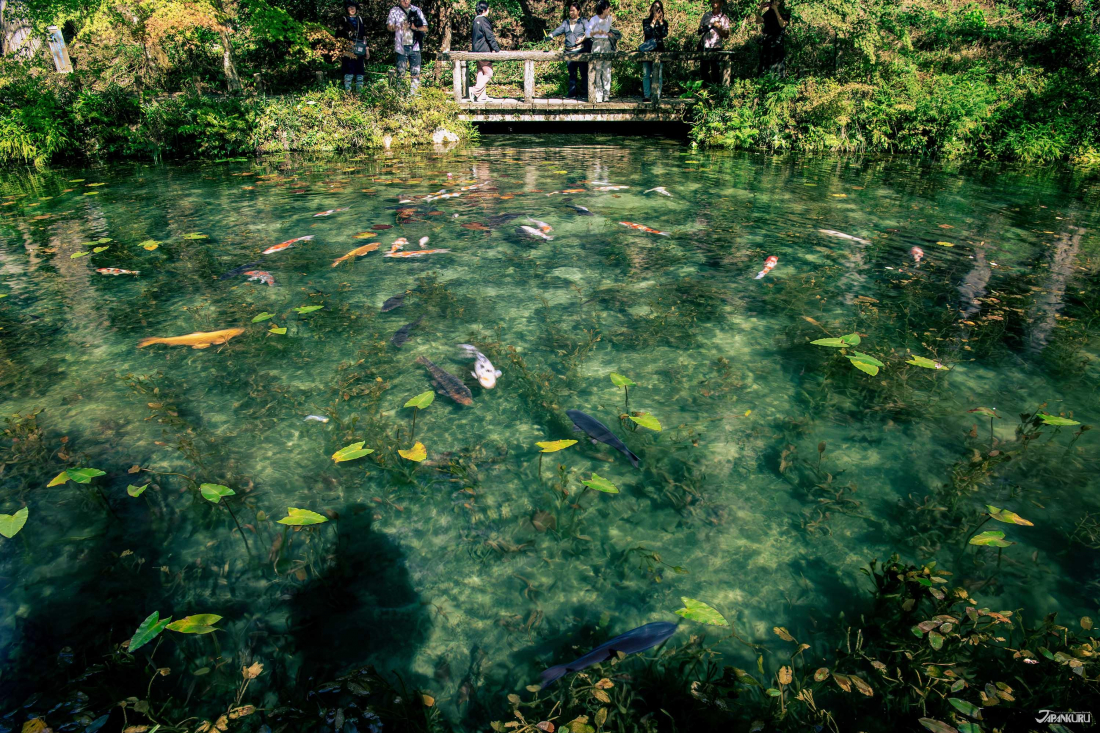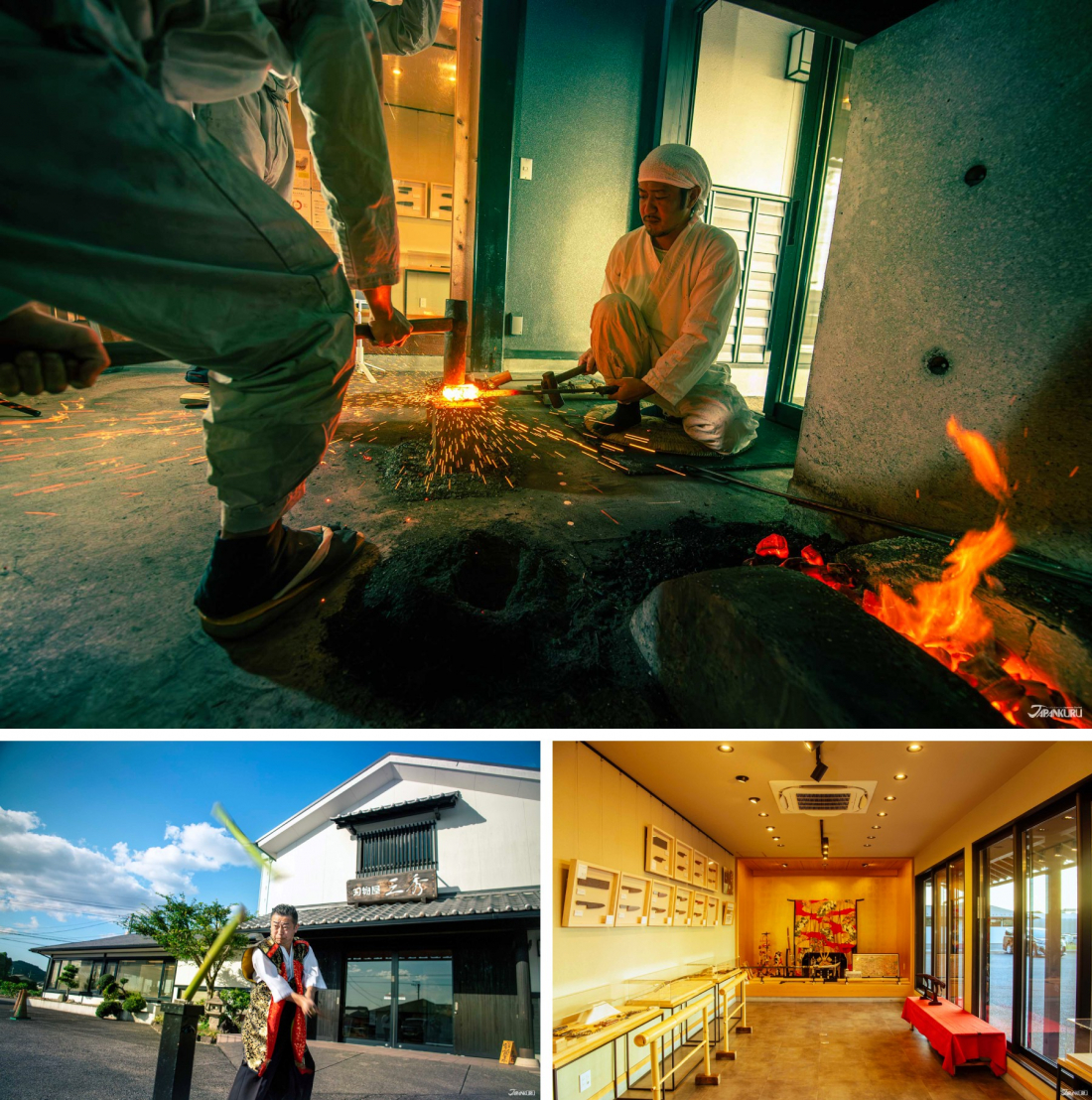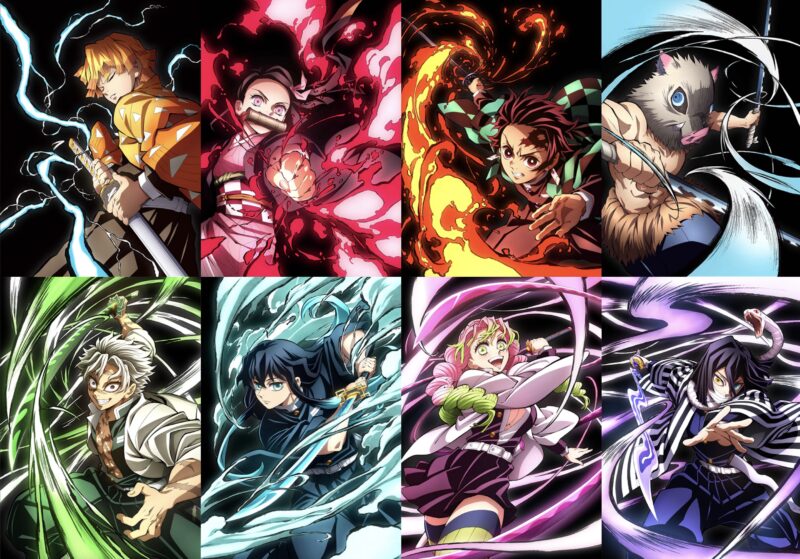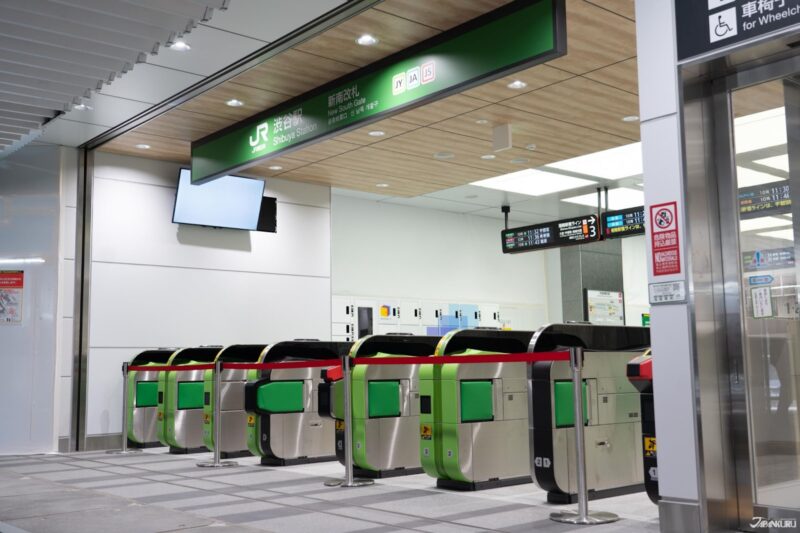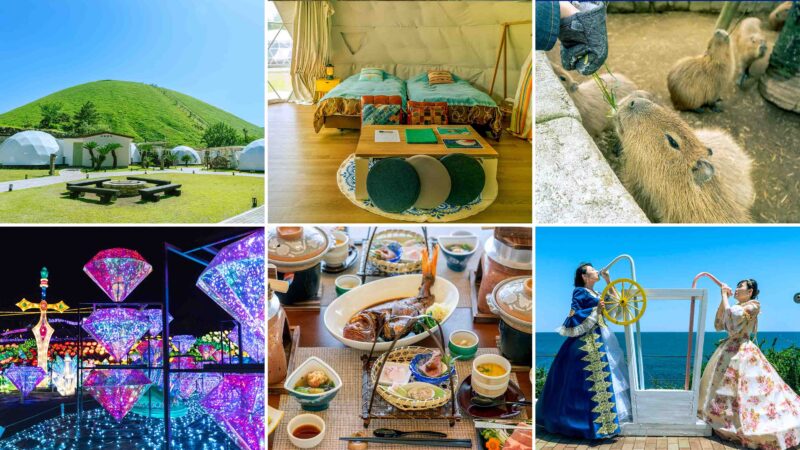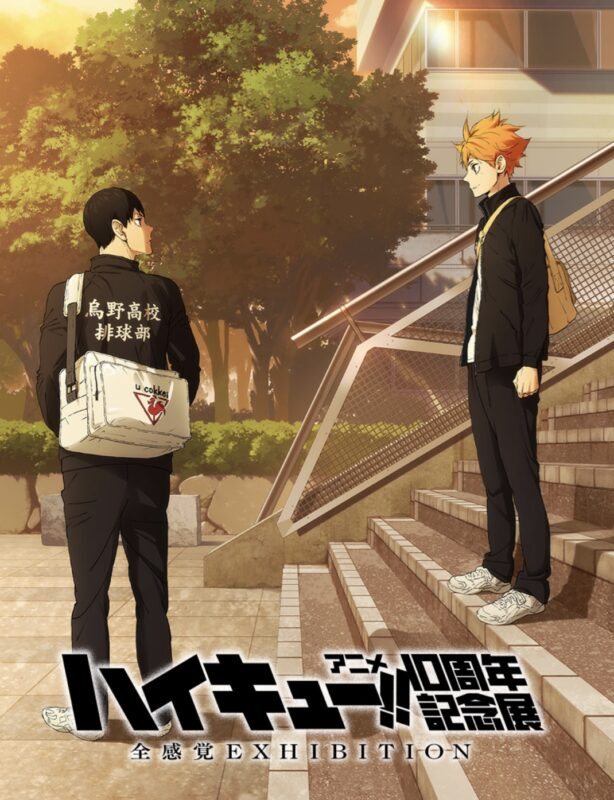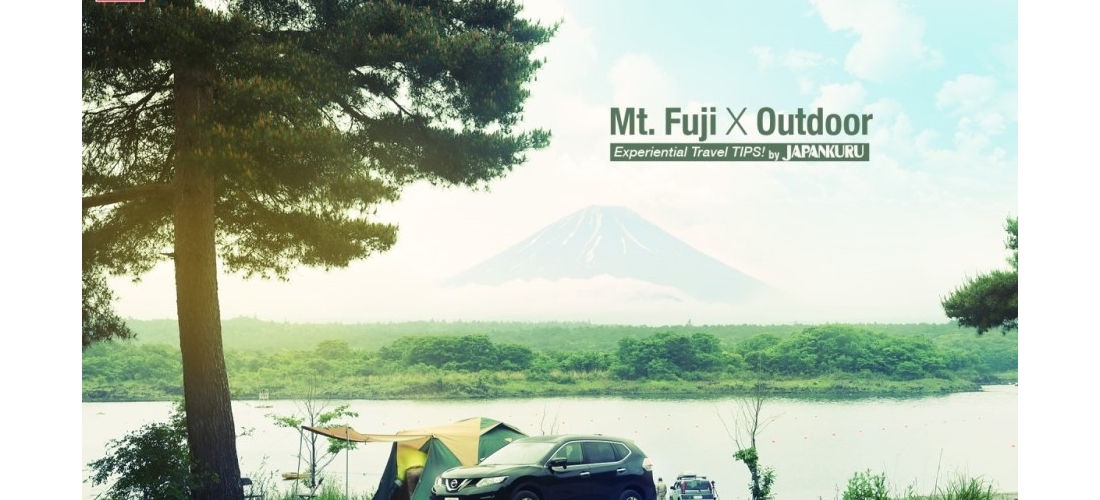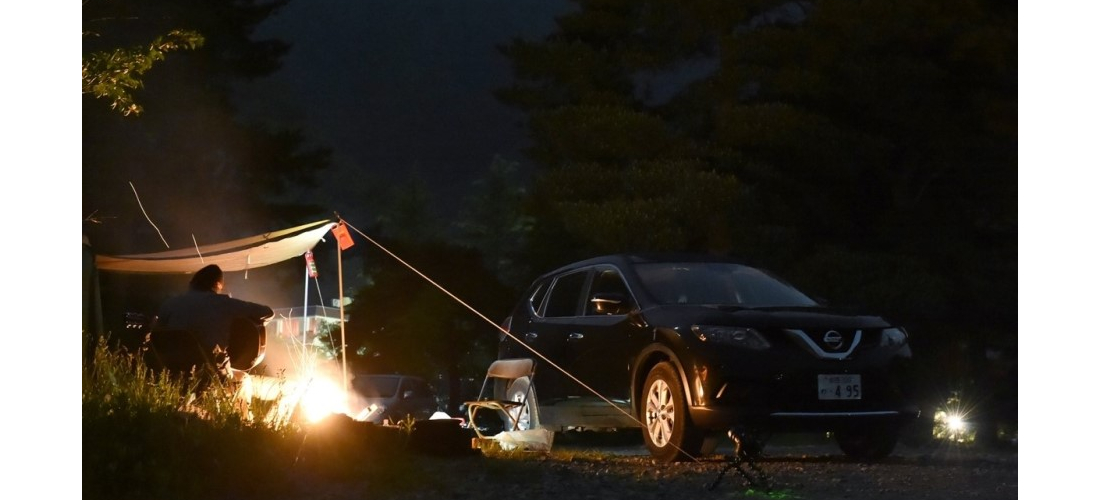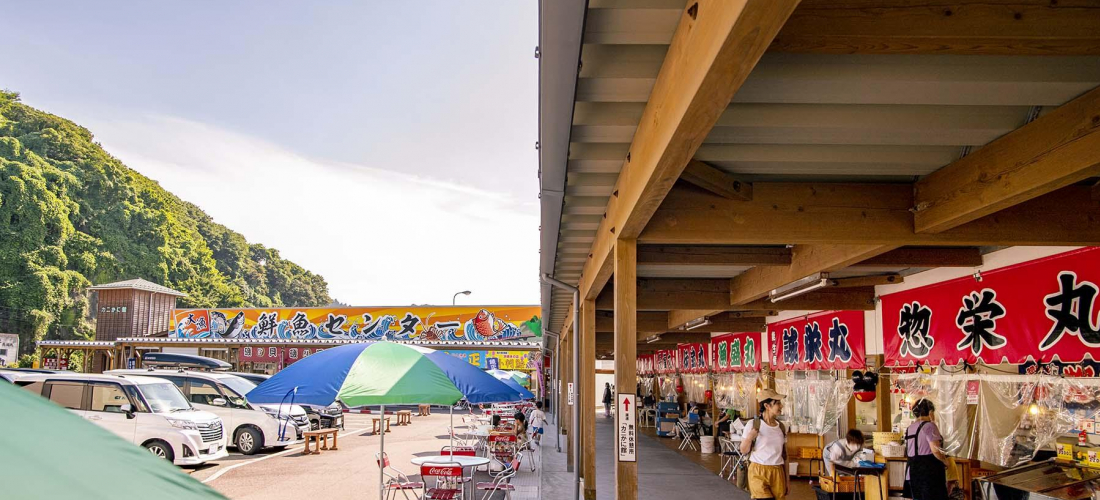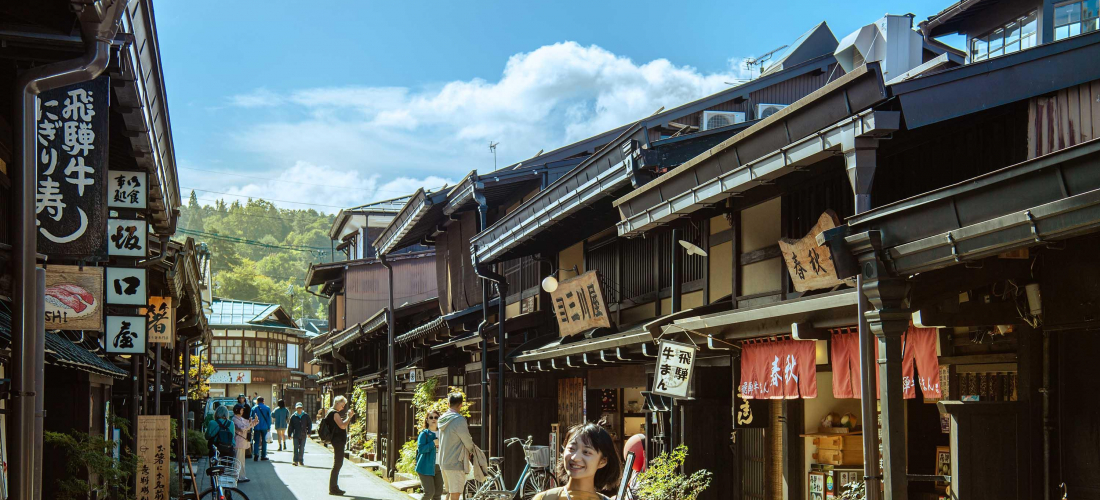
See the best of Gifu, from castles full of samurai history to world heritage villages, then enjoy Gero Onsen and Hida wagyu beef with this easy Gifu road trip guide!
CONTENTS
A Roadtrip of Japan’s Hidden Treasures
Gifu is a prefecture full of green mountains, bubbling hot springs, iconic traditional architecture, and the kind of local culture that many travelers long to see during their visit to Japan. And yet, the area suffers from a serious lack of name recognition. Travelers in Japan miss out on all that Gifu has to offer in favor of the same few big cities, bound to routes that run along the major train lines. Fortunately, tourists don't have to stick to the same crowded destinations, and it's not really so hard to break the mold and get off the beaten path in Japan. Rent a car, and Japan is yours to explore, from the major highways that run across the country's islands, to the little roads that wind through the forests of Gifu. Plan a road trip through Gifu, and you might be surprised at the treasure trove of beautiful villages, local delicacies, and unique sites that wait along the prefecture's green mountain roads. (There are even spots for fans of the anime film Your Name!) And to make things even more convenient, Japan's network of "michi no eki" (道の駅) or "road station" roadside rest stops offer practical facilities and a little peek at the local culture within each of the communities found along your road trip route. Stay at the Fairfield by Marriott hotels attached to certain Michi no Eki locations, and you've even got comfortable and convenient accommodations built right in. A road trip through Japan's countryside has never been so easy to plan, and Gifu is ripe for exploration.
Day 1: A Northbound Route Through Gifu
This road trip route is a loop up and down the length of Gifu, but we'll actually be starting from Nagoya Station in Aichi Prefecture, which is the closest shinkansen (bullet train) station to where we're headed. Of course, for information on what to see around the station, you'll have to look at other guides to Nagoya, because this time we're getting a car and heading straight for Gifu! Our road trip route will take us straight north, skimming the very edge of Gifu City before aiming for the historic Hida area and Shirakawago, with mountaintop castles and fields of flowers along the way. Northern Gifu is especially known for its traditional old atmosphere, and for some particularly delicious wagyu beef, so this trip includes a taste of both.
Start with a Castle View at Gujo Hachiman Castle
Ever wondered what it would be like to take your place as a samurai lord, looking out at your domain from the top of a tall castle? Gujo Hachiman Castle has been perched atop a mountain overlooking the Gujo Hachiman area since the 16th century, when the lord Endo Morikazu chose to build his castle atop his favorite battletime encampment. (So this fortress will do nicely when you want to live out your samurai dreams; welcome to your new Gifu territory!) Gujo Hachiman Castle served 19 generations of feudal lords over the course of 300 hundred years, and as time passed it saw a series of renovations and important battles – the tall castle tower was first erected in 1588, and the Battle of Hachiman Castle in the year 1600 was a prelude to Japan's momentous Battle of Sekigahara – before it was eventually abandoned after the political upheavals of the late 19th century, leaving the castle tower to soon be demolished. Fortunately, this local landmark wasn't missing from the tall mountain ridge for long! The old stone walls have remained intact, and a little over half a century after the spot was abandoned, locals came together and rebuilt the castle as it once was, using traditional wooden construction methods and basing the plans on other traditional castles from the same region. Gujo Hachiman Castle now boasts the title of "Oldest (Reconstructed) Wooden Castle in Japan," and not only can you check out historical exhibits and samurai armor on the lower floors, but you can also climb to the top of the squeaky wooden staircase for a fabulous view of the town below.
To get to the castle, you can either park the car at the foot of the mountain for a brisk hike to the top, or drive up to the parking lot right next door. For travelers looking to extend the road trip or switch things up a little, you can also spend some time in the town of Gujo Hachiman itself. There are a number of old streets remaining from the days when samurai ruled the castle, earning it the nickname "Little Kyoto."
Gujo Hachiman Castle (郡上八幡城)
Hachimancho Yanagimachi, Gujo, Gifu
Hours: 9:00 – 16:45
Official Website (jp)
Thatched Roofs & a Local Lunch at Shirakawago
Pushing further towards Gifu's northwestern edge, our journey takes us from a military abode used by Japan's upper crust, to the kind of housing built to meet the needs of Japan's peasantry. But despite the farmhouse-style practicality of the buildings, the village of Shirakawago is probably one of Gifu's most famous destinations, thanks to the dramatic visual appeal of the old-fashioned architecture! Now a UNESCO World Heritage Site, Shirakawago is made up of a hundred or so beautifully preserved thatched roof structures large and small, built around 300 years ago (give or take a century or two) in a style called "gassho-zukuri." With multiple floors and tall, steep roofs, the buildings are immediately recognizable, but the shape is actually the result of some very practical needs. For the farmers who once worked the land in the snowy mountains of Gifu, the dramatic shape of the houses helped to keep snow drifts from piling up and destroying the precious thatching that kept the rooms inside warm and dry throughout the winter! The iconic shape is what gave the architectural style its name – gassho-zukuri means "prayer hands style" – and to see it from above you can head to the Shiroyama Tenshukaku Observation deck for an amazing view of the whole area.
The village is now more of a sightseeing destination than an active farming community, with some buildings partially renovated inside to hold shops and restaurants, and others preserved as they once were, functioning as museums of traditional Gifu countryside life. The Wada House is the largest house in the area, and while many of the rooms inside are filled with Wada family heirlooms and open to visitors, a portion of the house is still inhabited by the family! Just park in the main Shirakawago parking lot and explore – you could easily spend anywhere from an hour to a whole day, walking along the paths that slip between tall thatched houses and broad rice paddies, and peeking inside to see how locals once lived!
Shirakawago (白川郷)
Ogimachi, Shirakawa, Ono District, Gifu
Official Website (en)
Shirakawago is a great place to enjoy a delicious lunch inside a beautiful building, since many of the old farmhouses have been turned into restaurants that serve up local specialties made with fresh Hida area ingredients. We decided to stop in at Irori, where we dithered over the many options on the menu, but ended up ordering soba noodles with locally foraged mountain greens, and lunch sets with dishes like local Hida beef (wagyu!) cooked atop magnolia leaves with seasonal vegetables and miso. Truly a locally-sourced feast.
Irori (白川郷 お食事処いろり)
374-1 Ogimachi, Shirakawa, Ono District, Gifu
Hours:
Lunch: 10:00 – 14:00
Dinner: 17:30 – 21:00 (Sat ~ Tue)
Official Website (en)
Relax Among the Flowers at Hirugano Kogen
With the afternoon still wide open, we have one more major destination for the day, and it's the perfect place to enjoy the hours of golden afternoon sunlight. Hirugano Kogen is actually a ski slope during the winter, when thick blankets of fluffy white snow cover the inclines to create a variety of ski runs. But during the warmer months of the year, after the snow is melted and gone, the green mountainside is turned into a colorful flower garden! They keep the chairlift running, so your first glimpse of the flower patches is actually from above.
Our trip through Gifu came at a time of year when the weather seemed to be unsure of whether it was late summer or early autumn, which was actually an ideal time to visit the "Hirugano Picnic Garden." Not only were the vivid pink and red begonias out in full force, in huge fields of magenta and bright red, but the kochia bushes were beginning to blush pink for autumn. In Ibaraki, at the Hitachi Seaside Park, the kochias are so popular that the crowds arriving from Tokyo make it hard to just walk. Here at Hirugano Kogen, we had the place pretty much to ourselves.
After running along the fields of flowers and taking all the photos you could dream of, the Momoiro Terrace & Cafe is waiting next to the chairlift. Grab one of their sweet, fruity drinks or an ice cream concoction, and relax with the resident sheep mascot. In one direction, the view looks out at the kochias and begonias, in the other you get to gaze at Mt. Dainichi and Mt. Haku. (If you're looking for even more breath-taking excitement, try Hirugano Kogen's zipline instead!)
Hirugano Kogen (ひるがの高原)
Takasucho Hirugano, Gujo, Gifu
Hours: 9:00 – 16:30
Official Website (jp)
Dinner & Hot Springs at Road Station Sakura-no-Sato Shokawa
It's finally time to wrap up our first day on the road, but not before getting one last taste of local Gifu in the Shokawa area! This part of the prefecture is known for wood carving, huge dams, waterwheels, and a single venerable sakura (cherry blossom) tree that was uprooted and moved to save it from the flood of the dam, and still stands today – now over 500 years old. In addition, like so many of Japan's little mountain towns, Shokawa is also known for farms and fresh produce, with fields of rice, vegetables, and plenty of buckwheat, and the best place to try it for yourself is a michi no eki called Road Station Sakura-no-Sato Shokawa. The shop, "Sakura," offers fresh fruit and vegetables, plus a variety of regional products, like sets of magnolia leaves and miso that let you bring a little bit of Shokawa home with you. (Don't miss the water wheels out front, either!)
Next door to the shop is a little bathhouse and restaurant, Ouka no Yu, where you can not only grab a meal that tastes like homecooking straight from a local Shokawa home, but also take a bath in the local hot springs! Try the "keichan," a healthy and umami-filled regional Gifu specialty made by cooking chicken and cabbage in miso sauce, or order soba noodles for a taste of the locally-grown buckwheat. Then soak away all the fatigue of travel in the onsen, which has baths out in the open air, and inside facilities including a carbonated spring!
Road Station Sakura-no-Sato Shokawa (道の駅 桜の郷 荘川)
88 Sarumaru, Shokawacho, Takayama, Gifu
Hours:
Shop: 8:00 – 17:00
Restaurant/Onsen: 10:00 – 20:30
Official Website (jp)
Night 1: Fairfield by Marriott Gifu Takayama Shirakawa Go
After a full day exploring the Gifu countryside, when a full belly and a luxurious hot bath at the michi no eki have you ready to hit the hay, there's nowhere more convenient to stay the night than Fairfield by Marriott Gifu Takayama Shirakawa Go. The Fairfield by Marriott hotels are all located in the vicinity of one michi no eki or another, all over Japan, and this one is right across the street from Road Station Sakura-no-Sato Shokawa! The hotel has a modern air to it, while still feeling warm and welcoming, with touches of local decoration that keep it grounded. Of course, the floor-to-ceiling windows at the back of the hotel look out onto an expansive rice paddy at the foot of a green mountainside, so it's not hard to feel Gifu all around you! Guests can choose between twin and king rooms, all decorated with simple, stylish furnishings.
The guest rooms all have convenient sofa benches, but when you want a place to hang out before heading to bed, the hotel's lobby lounge is like a big cozy living room. Make a cup of tea or coffee at the "community counter," which has a sink, hot drinks, a toaster, and a microwave, and relax in the armchairs. Or, if you didn't find enough local snacks to eat at the michi no eki, grab some more at the hotel's small shop space called "The Market," and enjoy them sitting at the long wooden table. (We recommend the locally-grown apple juice!) The lobby lounge is also the best place to see the hotel's touches of local culture – the walls are decorated with photos of local scenery, and the shelves have books about Japan arranged next to elegant wood carvings and other local crafts.
In the morning, prepare for another full day of Gifu with a tasty breakfast box to get you going! Fairfield by Marriott hotels don't have their own restaurants, so instead you can reserve a bento-style breakfast ahead of time when booking your room, and simply pick it up from the front desk in the morning. Even this breakfast box is full of local delights, from flavorful "okowa" rice cooked with local vegetables, to slices of Hida pork, and even "inari soba" made with fried tofu and soba noodles. The theme for this Gifu breakfast box is home cooking, and it focuses on the kinds of foods that locals might make for a weeknight dinner or a packed school lunch… except it tastes like it was prepared by the best home cook around!
Fairfield by Marriott Gifu Takayama Shirakawa Go (フェアフィールド・バイ・マリオット・岐阜高山白川郷)
46-1 Sarumaru, Shokawacho, Takayama, Gifu
Check-in/Check-out: 15:00/11:00
Official Website (en)
Day 2: A Winding Path Past Gero Onsen
The second day of this Gifu road trip takes us to popular tourist destinations new and old. See the many faces of Gifu as we stroll through the markets and merchant streets of Takayama, dip toes into the ancient springs of Gero, gaze at ponds straight from a painting, see the glow of innovative lanterns made from Mino's traditional materials, and much more!
A Morning Exploring Takayama
Often referred to as "Hida-Takayama" to avoid confusion with other areas named Takayama, this small city has long been prosperous thanks to the lumber (and the skilled carving) cultivated in the tree-covered mountains that surround the community. Fortunately for us, unlike so many of the little merchant towns that once dotted the Japanese countryside, Takayama has preserved some significant chunks of its old town and old-fashioned culture! We started our morning at the Jinya-mae Morning Market, widely considered one of Japan's "Three Great Morning Markets," located in front of a historical former government building. The morning market traces its history back to a mulberry market in the early 19th century, and these days the stalls still mostly sell fresh produce, with a smattering of baked goods, pickles, and fresh flowers. Offerings rotate throughout the year, but we were fortunate enough to come during apple season, when the apples tasted as sweet as candy. Grab some fruit or veggies to snack on while driving – you absolutely won't regret it.
Jinya-mae Morning Market (陣屋前朝市)
1-5 Hachikenmachi, Takayama, Gifu
Hours: 7:00 – 12:00
Official Website (jp)
Just across the Miyagawa River, the historical Sanmachi area offers a glimpse of merchant life in centuries past. Walk down the narrow main street to see the wonderfully preserved houses of merchants who got rich off the local timber and other successful businesspeople from long-ago Takayama. The area is dotted with shops, restaurants, and even little museums, built inside the dark wood exteriors of the historical houses. Snack on an apple and wander the streets to slip back in time for the morning.
Sanmachi Historical Area (飛騨高山古い町並 三町伝統的建造物群保存地区)
Kamisannomachi, Takayama, Gifu
Fans of Japanese animation, take note! Before leaving Takayama, you might want to stop by the Hie Shrine, south of the market and old town area. Hardcore fans of the anime movie Your Name (Kimi no Na wa/君の名は) may remember that half of the film is based in the (fictional) Gifu town of Itomori, but there is reason to believe that director Makoto Shinkai took some inspiration from Takayama, because Hie Shrine looks an awful lot like the fictional Miyamizu Shrine run by the family of the main character. There's no denying that the view of the shrine and its inner torii gate is the spitting image of the shrine in the movie! Check it out to see it for yourself.
Takayama Hie Shrine (飛騨山王宮・日枝神社)
156 Shiroyama, Takayama, Gifu
Hours: 8:30 – 16:30
Official Website (jp)
Footbaths & Streetfood in Gero Onsen
Gifu Prefecture is scattered with natural hot springs, but the star of the show is Gero Onsen, which has been a destination for hot spring lovers since at least as far back as the 8th century, when it was mentioned in the historical document called the Shoku Nihongi. We can all be glad that this hot spring shows no signs of drying up anytime soon, and the small city that sprang up around the warm water is still replete with bathhouses where visitors can soak in the alkaline water that leaves skin silky smooth. If you don't feel like taking a whole bath in the middle of the day, Gero Onsen's many footbaths are a perfect alternative! They can be found all over the place, but we particularly recommend the Funsenchi baths, which offer picturesque stone-lined pools of steaming onsen water next to where the Gero Ohashi Bridge crosses the Hida River.
Funsenchi Outdoor Footbath (下呂温泉 噴泉池)
Koden, Gero, Gifu
If you're looking for streetfood, take a look along the quaint riverside streets of Gero Onsen, because it's a treasure trove of tasty snacks and sweets. If it's just about lunch time, the beef buns filled with local Hida (wagyu) beef are a great savory snack, stuffed with juicy bits of marbled meat. Just don't forget to save room for dessert, because you'll find some surprising options nearby. Yuamiya specializes in Japanese-style pudding, which is kept piping hot in a pool of flowing onsen water, but that's not the only thing on the menu. Their onsen egg ice cream (ontama soft serve/温玉ソフト) is just what it sounds like – ice cream topped with a soft-boiled egg cooked in the steaming hot spring water. At first the combination might sound a little unsettling, but the mild flavor and rich mouthfeel of the egg mix perfectly into the sweet, creamy soft serve ice cream. It's surprisingly good, and the pictures are great for freaking your friends out! (Plus, the shop has its own footbath, where you can soak your feet while eating.)
Yuamiya (ゆあみ屋)
801-2 Yunoshima, Gero, Gifu
Hours: 9:00 – 18:30
Official Website (en)
See Art Brought to Life at “Monet’s Pond”
After spending the morning by the Miyagawa River in Takayama and visiting the hot springs of Gero Onsen, next we head to another body of water in the city of Seki, officially named the Namonaki Pond (名もなき池) – literally the "nameless pond." Fortunately, the clear waters, green lily pads, and lively koi fish that live in the water have blessed the location with a nickname that defies its nameless nature, and it now goes by "Monet's Pond." However, true to its roots, the pond has a rather unpoetic origin story despite being named after the artistry of Monet's Water Lilies. The pond actually began as part of an irrigation system taking advantage of water bubbling up from nearby springs, constructed at the foot of Nemichi Shrine in 1980, and locals ended up adding water lilies and koi fish as they pleased over the years. It spend decades in obscurity, but in 2015 the little nameless koi pond made its way onto the internet and onto people's feeds, and viewers were stunned by the crystal-clear spring water and the life that inhabited it. Now dubbed Monet's Pond, the spot was something of an overnight sensation, and it quickly went from a local landmark to a must-see roadside attraction. Take it from us – it might be difficult to snap a photo that looks like a Monet painting, but the pond really is beautiful in real life.
Monet's Pond (モネの池)
440-1 Itatori, Seki, Gifu
Official Website (jp)
Samurai Swords & Kitchen Knives at Seki Hamono Museum
On our first day in Gifu, we gazed over our vast domain as samurai lords atop a gleaming white castle. On our second day, it's time to find a sword in the city of Seki.
Japanese swords are made through a long process of folding steel and beating the heated layers on an anvil, carefully shaping the hardest metal around a soft, flexible core, quenching the heated blade after applying a clay slurry, and so much more – all in a stiflingly hot room while working the bellows. It's a tough job, but it's one that expert craftsmen in Seki have been perfecting for centuries, and the Seki Hamono Museum provides a little look at how it's done. The bright exhibition space takes you through the entire process from start to finish, from the lumpy chunks of iron that make up the base materials, through the complicated steps of forging the blade, to the final polishing and finishing touches. But this museum also functions as a workshop for the illustrious line of Kanefusa Fujiwara master swordsmiths (now on the 25th and 26th generations), and if you book a "sword forging tour" ahead of time, you can see the latest master at work. Watch the sword-making process up close, then try it yourself – they actually let us try hammering the steel, and then holding the unfinished sword steady while the actual experts pounded away.
There are a number of striking Kanefusa Fujiwara swords on display, and in the attached shop (Cutler Sansyu) you can not only buy real swords, but also a wide selection of more practical blades as well. Here at the museum, they're keeping the local art of swordsmithing alive in its original form, but all around Seki many workshops have put their skills to work making kitchen knives and the like instead. Popular items include locally-made scissors, and cooking knives made by Kanefusa Fujiwara using traditional clay-tempering methods. There's nothing like a chef's knife made by a samurai swordsmith!
Cutler Sansyu / Seki Hamono Museum (刃物屋三秀/関刃物ミュージアム)
950-1 Oze, Seki, Gifu
Hours: 9:00 – 16:30
Official Website (en)
Edo Architecture & Light Art in Mino
Tucked in between the castle town of Gujo and the swordsmiths of Seki, Mino first prospered when a small castle and port were built as a little stop for traders making their way along the Nagara River. But it was the growing village's high-quality washi paper, made locally since the 8th century, that really made a name for Mino, and brought the community the riches needed to build streets of elegant traditional houses that travelers now come to see. That original city center was built on high ground away from the river to avoid the all-too-common risk of flooding, but that meant the houses were dangerously far from the water in case of fire, leading the people of Mino to build firebreaks called "udatsu" between the tightly-packed houses. Many of the old houses in Mino's old downtown area are still well preserved, udatsu and all, and while a good number of them are still private homes, many are also little shops and cafes. (Mino is also the birthplace of Chiune Sugihara, the Japanese diplomat who saved the lives of thousands of WWII Jewish refugees by issuing visas. Look out for the sign on the main road!) Grab a cup of coffee and wander the streets during sunset for a magical experience.
Mino Udatsu Wall Historical District
Mino, Gifu
Mino helped turn the production of traditional Japanese washi paper into an industry, churning out sheets of mulberry paper praised around Japan, and in turn washi paper helped turn Mino into a thriving community. Washi is still seen all over the town, making it clear how important the paper still feels to the people of Mino, and to celebrate washi's beauty, flexibility, and strength, they have now turned washi lantern making into a tradition. Every year, washi lovers from around Japan use Mino washi to create unique lanterns of all shapes and sizes for the Mino Washi Akari Art Exhibition. Every October, those lanterns are displayed along the streets of Mino's old city center, lighting up the traditional buildings with warm lantern light after dark. Fortunately, even if you miss the yearly exhibition period, a selection of the lanterns is on display year-round at the Mino Washi Akari Art Museum.
Mino Washi Akari Art Museum (美濃和紙あかりアート館)
1901-3 Motozumicho, Mino, Gifu
Hours: 9:00 – 16:00 (closed Tue)
Museum Official Page (jp) | Akari Art Exhibition Official Website (jp)
Night 2: Fairfield by Marriott Gifu Mino
Down the street from Mino's historic district, Fairfield by Marriott Gifu Mino can be found on the bank of the same Nagara River that once brought fame and fortune to the city. The hotel is tucked in between the picturesque rushing water and the local michi no eki, which means it's got all the conveniences you might want after a day exploring old Gifu, plus some great views out the windows. And with the same comfortably chic furnishings as other Fairfield by Marriott locations, from the twin and king rooms to the convenient "community counter" downstairs, you know you can expect a comfortable stay when you finally turn in for the night – and you'll still find plenty of local charm in the lobby lounge, too.
At Fairfield by Marriott Gifu Mino, washi paper is one of the first local details you'll notice around the hotel. Washi crafts line the shelves by the sitting area in the form of lacy detailed paper lanterns, fans, and umbrellas, and on the walls, photos of local landmarks and Mino culture are on display, including a washi papermaking frame, and bits of mulberry bush being made into paper. (You might also spot a photo of the nearby historic district, and another photo featuring Monet's Pond!) Even "The Market," a small shopping area inside the hotel, sells a rotating selection of local Mino crafts, such as washi paper lamps, alongside snacks and drinks. Any stationery buffs with a love for washi paper won't want to miss a visit to Mino and this hotel.
Fairfield by Marriott Gifu Mino (フェアフィールド・バイ・マリオット・岐阜美濃)
2001-1 Shiroshita, Sodai, Mino, Gifu
Check-in/Check-out: 15:00/11:00
Official Website (en)
The hotel's shopping area has standard Japanese treats and some local souvenirs, like Mino Machinami Manju (red bean buns), that work great as a little dessert or even a midnight snack. But for a broad selection of local products, from fresh produce to packaged sweets, just walk across the parking lot to get to Roadside Station Mino Niwakajaya. Nowadays, Mino commerce has mostly moved away from the river banks, but it's still alive and well at this riverside rest stop! Pick up some locally-grown dried fruit to snack on in the car during the last segment of the road trip, or grab a few fun food souvenirs to bring home for friends and family. We recommend the soba noodles, or even the craft cola concentrate. Even weeks after you get back home and return to the rhythm of daily life, there's nothing better than a little bit of Gifu flavor to take you right back to your fondest memories of Mino, Shirakawago, and all the mountain roads in between!
Road Station Mino Niwakajaya (道の駅 美濃にわか茶屋)
2007 Sodai, Mino, Gifu
Hours: 8:30 – 18:00
Official Website (jp)
Back to Nagoya
Two full days and nights in Gifu brought us to sunny morning markets, old city streets, and little country roads, while we indulged in luxurious onsen baths and meals of wagyu beef or fresh soba noodles. We only just scratched the surface, and yet each day was packed full of new cities with old towns ripe for exploration, and little communities just waiting to show off their most delicious local delicacies. It's hard to imagine how so many travelers in Japan have never even heard of Gifu, but then again, that just means it's a prefecture full of hidden gems, waiting for the next visitor who's willing to venture a little further off the beaten path. So rent a car and plan a couple nights in the Fairfield hotels scattered across Gifu's network of michi no eki rest stops – you'll see a side of Japan you've never known before!
▶︎ Or explore another part of rural Japan to see how beautiful the country really is – there are Fairfield by Marriott Michi-no-Eki hotels all over Japan, and there's always more to see out on the open road! Check out our Kyoto road trip from the early summer, and take a look at the official Fairfield by Marriott website too.
For more info and updates from Japan, check Japankuru for new articles, and don't forget to follow us on X (Twitter), Instagram, and Facebook!
Details
NAME:Fairfield by Marriott (フェアフィールド・バイ・マリオット)
PROFILE
Follow us @Japankuru on Facebook, Instagram, and Twitter!
COMMENT
FEATURED MEDIA
VIEW MORE
A Very Special Trip on the Ferry Sunflower #japankuru #ferrysunflower #hokkaidotrip #japanexperience #japantrip #girlstrip #oarai #tomakomai #北海道 #北海道旅行 #茨城 #홋가이도 #일본선박여행 #토마코마이 #이바라키 #북해도 #페리여행 #여행에미치다 #여자끼리 #日本渡輪 #sunflower號 #坐船旅行 #日本女子旅 #日本體驗

Japanese Makeup Shopping • A Trip to Kamakura & Enoshima With Canmake’s Cool-Toned Summer Makeup #pr #canmake #enoshima #enoden #에노시마 #캔메이크 #japanesemakeup #japanesecosmetics

⚔️The Robot Restaurant is gone, but the Samurai Restaurant is here to take its place. Check it out, and don't forget your coupon! 🍣신주쿠의 명소 로봇 레스토랑이 사무라이 레스토랑으로 부활! 절찬 쿠폰 발급중 💃18歲以上才能入場的歌舞秀,和你想的不一樣!拿好優惠券去看看~ #tokyo #shinjuku #samurairestaurant #robotrestaurant #tokyotrip #도쿄여행 #신주쿠 #사무라이레스토랑 #이색체험 #할인이벤트 #歌舞伎町 #東京景點 #武士餐廳 #日本表演 #日本文化體驗 #japankuru #japantrip #japantravel #japanlovers #japan_of_insta

Japanese appliance & electronics shopping with our KOJIMA x BicCamera coupon! 用JAPANKURU的KOJIMA x BicCamera優惠券買這些正好❤️ 코지마 x 빅 카메라 쿠폰으로 일본 가전 제품 쇼핑하기 #pr #japankuru #japanshopping #kojima #biccamera #japaneseskincare #yaman #dji #osmopocket3 #skincaredevice #日本購物 #美容儀 #相機 #雅萌 #日本家電 #일본여행 #면세 #여행꿀팁 #일본쇼핑리스트 #쿠폰 #일본쇼핑 #일본브랜드 #할인 #코지마 #빅카메라 #japankurucoupon

Odaiba's DiverCity Tokyo Plaza is home to the famous real-size 20m-tall Unicorn Gundam, and the popular shopping center has even more Gundam on the inside! Check out the Gundam Base Tokyo on the 7th floor for shelves upon shelves of Gunpla, and the Gundam Base Tokyo Annex on the 2nd floor for cool anime merchandise. Both shops have tons of limited-edition items! #pr #odaiba #tokyo #tokyotrip #japantrip #japantravel #PR #divercity #divercitytokyoplaza #tokyoshopping #gundam #unicorngundam #gundambasetokyo #anime #otaku #gunpla #japankuru #오다이바 #다이바시티도쿄 #오다이바건담 #건담 #일본건담 #건프라 #건담베이스도쿄

#okinawa #japankuru #littleuniverse #littleuniverseokinawa #오키나와 #리틀유니버스오키나와 #일본여행 #沖縄 #iias沖縄豊崎 #dmm카리유시수족관 #오키나와여행 #沖繩小小宇宙博物館 #iiasokinawatoyosaki #이이아스오키나와 #japanesekawaii #japantrip #okinawajapan #okinawatrip

